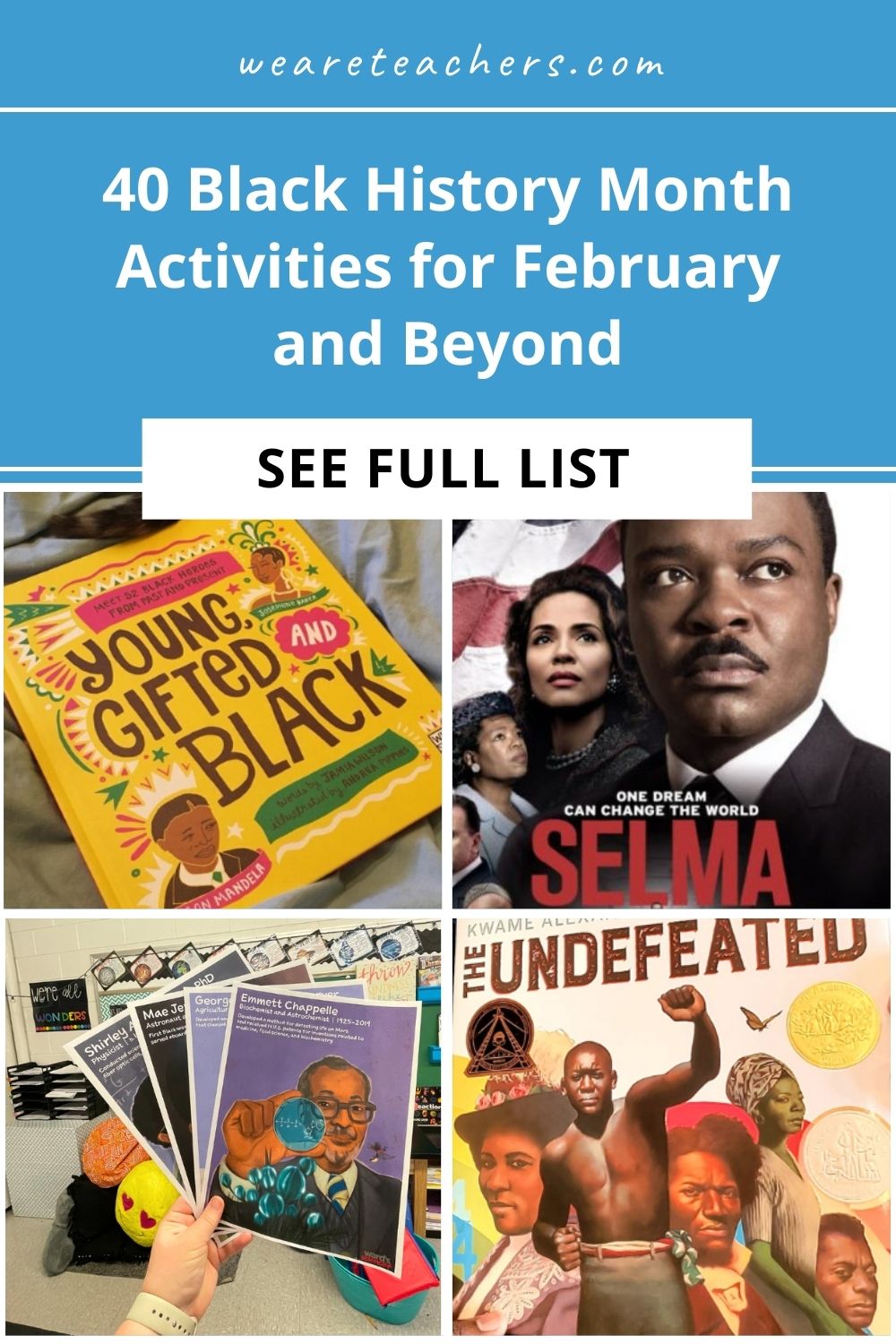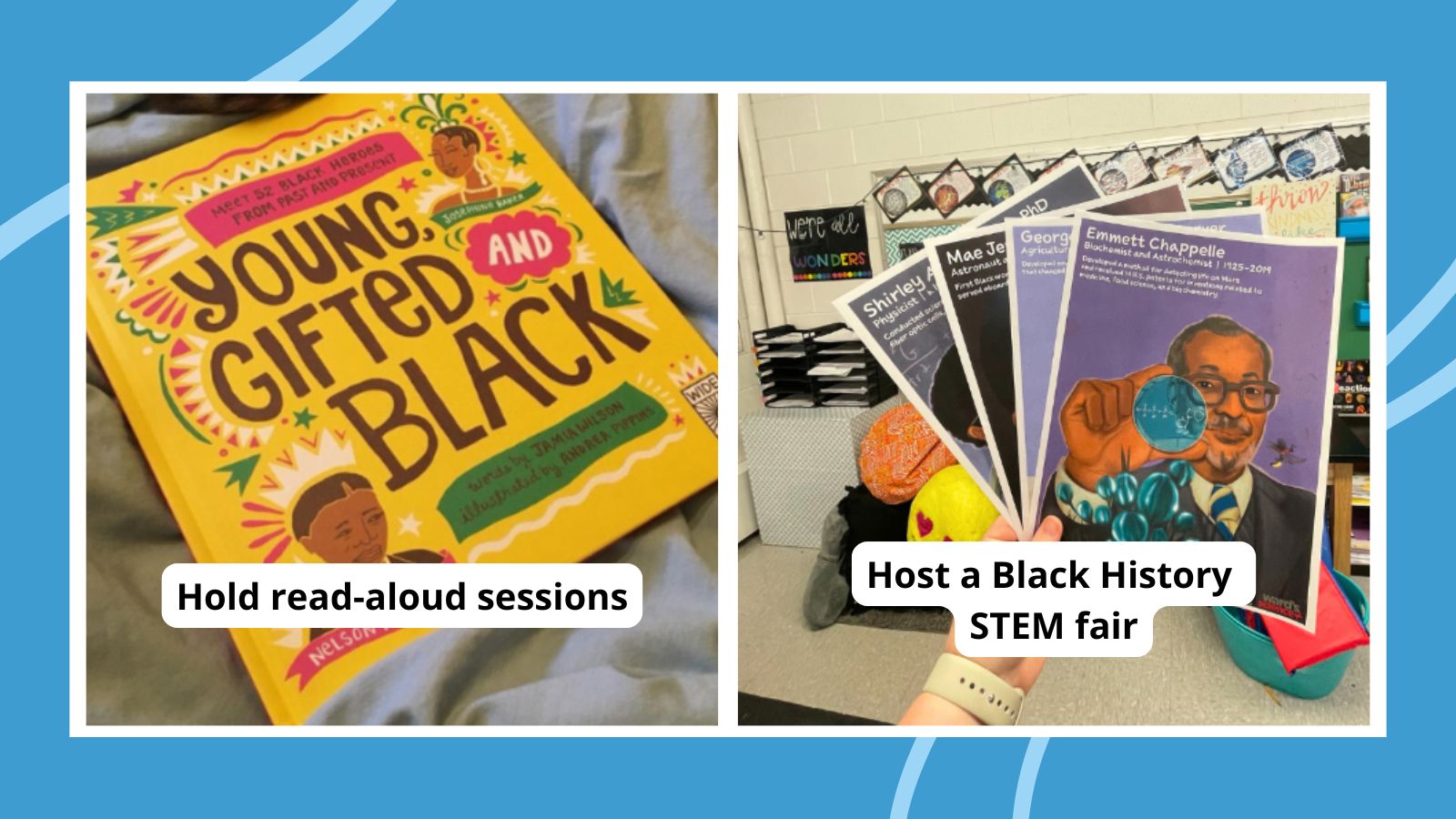The gift of February is that it allows teachers and students to learn something new about Black Americans. February begins the first 28 days of a 365-day celebration of African American history. I love Black History Month because it is an opportunity to celebrate the incredible contributions of Black Americans to history, science, art, culture, and civil rights through Black History Month activities. Black Americans are making history every day and it is important to provide opportunities and Black History Month activities for all to learn more about these accomplishments.
As teachers, it’s important to use diverse and engaging resources to help students understand the complexities of Black history in a respectful and meaningful way. I have compiled ideas and Black History Month activities for teaching about Black History Month so that everyone can learn together in our inclusive, culturally rich classrooms.
Black History Month Tips for Teachers
When teaching Black History Month activities, it’s crucial to approach the topic with respect, openness, and inclusivity. Here are a few key tips, plus check out more Black History Month tips for schools here.
Foster Open Dialogue
Encourage students to ask questions and express their feelings about what they are learning.
Avoid Simplification
While stories of struggle are important, also highlight stories of achievement, creativity, and the contributions of Black individuals in various fields.
Incorporate Multiple Perspectives
Acknowledge the diversity within the Black community, focusing on the different experiences of Black people throughout history.
Promote Action and Empathy
Encourage students to take action on issues of equality, justice, and human rights, both in and out of the classroom.
Black History Month Activities
Read, Write, and Reflect
When reading, create space for discussion on themes like perseverance, equality, resilience, and the importance of representation. Encourage students to connect the stories with their own lives.
Resources for the activities below:
- Black History Month Books
- Black Children’s Book Authors
- Black History Month Poems (Free Printable)
- Famous Black Americans and Leaders
1. Hold read-aloud sessions
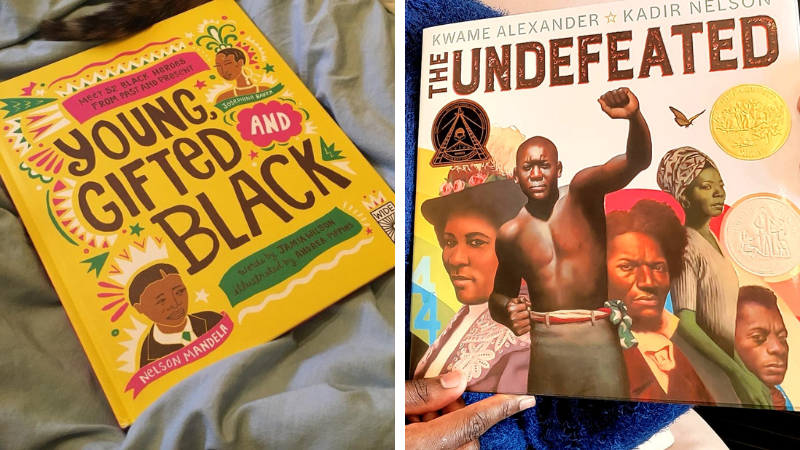
Choose a selection of age-appropriate poetry and stories featuring important figures and events from Black history. Examples include The Story of Ruby Bridges by Robert Coles (grades K-2) and Hidden Figures by Margot Lee Shetterly (grades 3-5).
2. Organize literature circles
For older students (grades 6-12), organize literature circles where small groups of students read different books about significant Black historical figures (e.g., Malcolm X: A Life of Reinvention by Manning Marable for high school) and discuss key themes.
3. Write short stories and biographies
Ask students to create a “Black History Month Book” by researching a famous Black figure and writing a fictionalized short story or biography based on real events.
4. Conduct a famous African American military member research assignment
Assign students Black History Month activities to research notable African American military figures (e.g., Colonel Charles Young, the Tuskegee Airmen) and create presentations or posters highlighting their achievements. Highlight the bravery and perseverance of African American military figures who served in segregated units or fought against racial injustice in the armed forces. Teach students about the pivotal role these figures played in changing military policy and advancing civil rights.
5. Conduct a famous African American Olympian research assignment
Have students research famous African American Olympians (e.g., Jackie Robinson, Wilma Rudolph, Simone Biles) and explore their achievements both in and out of the sports arena. Use these athletes as examples of excellence, perseverance, and breaking barriers. Discuss how African American athletes have used their platform to advocate for social justice and equality.
6. Read up on famous African American educators
Have students research famous African American educators (e.g., Mary McLeod Bethune, Booker T. Washington) and their contributions to education. Discuss how these educators advocated for systemic changes in education, and have students debate how education should change today.
Analyze Quotes and Speeches
Encourage students to analyze quotes for the historical context behind them. Explain why these figures spoke these words and how they reflect struggles or triumphs in Black history.
Resources for the activities below:
7. Design a quote wall
Have students choose a meaningful Black History Month quote each week to display on a bulletin board. They can write a short reflection on what the quote means to them and how it connects to today’s world.
8. Interpret famous quotes
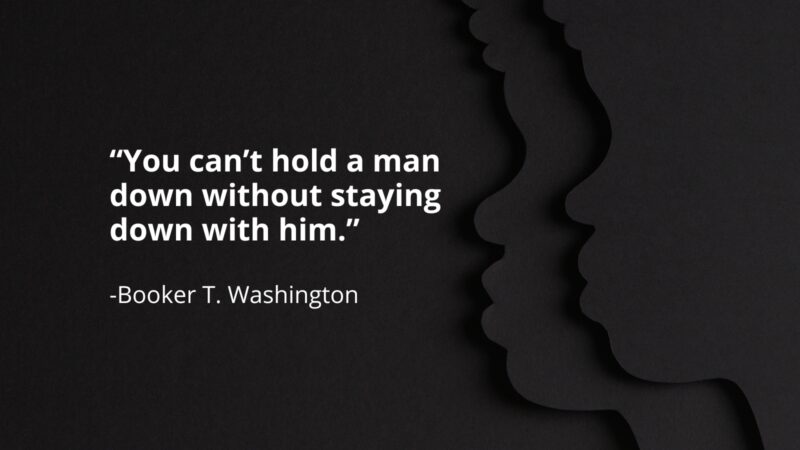
Present famous quotes (e.g., “The time is always right to do what is right.” —MLK Jr.). Ask students to interpret the quote, identify the historical context, and discuss its relevance today.
9. Hold a daily quote challenge
Share a quote each day and have students respond in a journal or on a class blog, reflecting on its impact on their thinking.
10. Create quote displays
Decorate the classroom with student-created artwork and/or quotes from Black leaders, poets, and activists.
11. Interview family members
Have students interview older family members about their personal histories or notable achievements. Students can create family timelines or digital recordings of their interviews. Encourage students to reflect on how family histories tie into broader historical narratives, such as the Civil Rights Movement or the Great Migration. Teach them the value of oral histories in preserving culture and understanding personal connections to the past.
12. Conduct a literary analysis
Have students read a book by an African American author (e.g., The Color Purple, Beloved, The Hate U Give) and watch the film adaptation. Ask them to compare and contrast the two versions, analyzing themes, characters, and historical context. Use the opportunity to explore themes of adaptation, representation, and the different ways stories can be told through various mediums. Encourage critical thinking about how films may either amplify or dilute the messages in the original books.
Watch, Visit, and Discuss
Ensure films and documentaries are age-appropriate and accompanied by a pre-screening discussion about the historical accuracy and context of what students will see. Consider the accessibility of videos for all students, providing captions, translations, or alternative formats where necessary.
Resources for the activities below:
13. Screen films
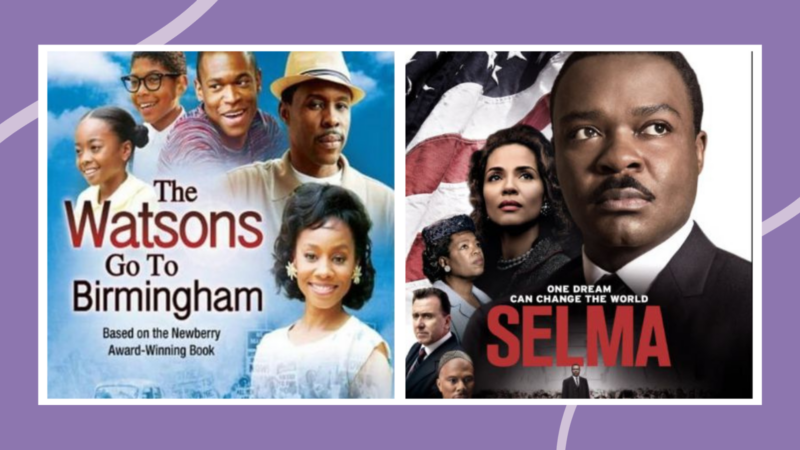
Screen films such as Selma (about the Civil Rights Movement) or The Pursuit of Happyness (about the life of Chris Gardner). Follow up with a guided discussion on the historical significance and impact of these events.
14. Watch documentaries
Show educational videos on topics like the Harlem Renaissance or the life of Harriet Tubman. Follow up with guided questions and group discussions.
15. Write movie reviews
Have students write movie reviews or journal entries after watching films, discussing what they learned and how the movie changed or deepened their understanding of Black history.
16. Host comparative film studies
Show films that explore the same topic (e.g., different portrayals of Rosa Parks in The Rosa Parks Story vs. Selma) and ask students to compare and contrast the ways these stories are told.
17. Take a virtual field trip
Use online resources to take students on a virtual tour of important historical sites like the National Museum of African American History and Culture, The Dusable museum, or The Wright.
18. Discuss the significance of HBCUs (Historically Black Colleges and Universities)
Organize a virtual tour of an HBCU campus, or arrange for a guest speaker from an HBCU to talk about the experience and opportunities at these institutions. Encourage students to reflect on the significance of HBCUs in shaping Black culture, identity, and history. Incorporate discussions on how HBCUs serve as cultural, social, and intellectual hubs for Black students. Connect this to the broader African American experience, emphasizing how education has been a tool for empowerment.
19. Take a virtual art tour
Take students on a virtual tour of cities known for their African American murals, such as Philadelphia or Detroit. Discuss how murals serve as a visual form of storytelling, activism, and cultural pride. Encourage students to think about the symbolism and themes of murals, and how art can be a powerful tool for social change.
20. Host a guest speaker
If possible, invite a local Black leader or community figure to speak to the class or conduct a virtual interview.
21. Analyze historic photos
Have students analyze historic photos from the Civil Rights Movement, Harlem Renaissance, or Black Power era. Ask them to write or discuss the context, emotions, and historical significance behind the photos. In small groups, students can reenact iconic scenes from Black history based on historic photos, then present their interpretations to the class.
Create and Share
Encourage students to incorporate multimedia, such as music, video clips, and images, to create more engaging presentations that reflect the richness of Black culture. Ensure students understand that Black history is not just about struggle; it is also about achievement, creativity, and community building. Focus on celebrating the diversity of experiences within the Black community.
Resources for the activities below:
- Black History Month Classroom Doors
- Black History Month Facts (Includes Google Slides)
- Famous African American Artists
- Black Scientists (Printable Posters)
22. Share a fact of the day
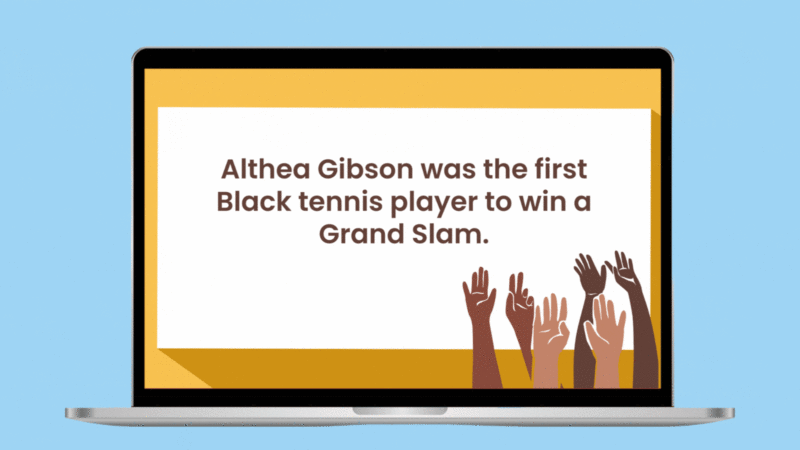
Share a daily fact about a prominent Black figure or event. Ask students to create posters or presentations based on these facts.
23. Play a trivia game
Host a trivia game based on historical facts about Black history. Divide the class into teams and reward correct answers with small prizes or recognition.
24. Encourage journaling
Have students compile a Black History Month fact journal, where they note interesting facts about Black historical figures or events they encounter throughout the month.
25. Decorate your classroom door
Have students help decorate your classroom door with representations of Black leaders, artists, or scholars. Each student can take a part in creating a symbol or image that represents the contributions of Black Americans.
26. Use multimedia to learn about Black sororities and fraternities
Have students create posters or multimedia presentations that showcase the history, values, and impact of organizations like Alpha Phi Alpha, Delta Sigma Theta, or Omega Psi Phi. Highlight the service and leadership aspects of these organizations. Focus on their community outreach, activism, and scholarship programs. Encourage students to think critically about the role of Black fraternities and sororities in shaping Black history and culture.
27. Cook for the class
Have students research famous African American chefs (e.g., Marcus Samuelsson, Edna Lewis, or Leah Chase) and then try to re-create one of their recipes in class. Discuss the cultural significance of African American cuisine, such as the influence of Southern cooking, soul food, and African influences on American cuisine.
28. Write a song
Have students research the history of protest songs (e.g., “Lift Every Voice and Sing”) or the role of music in the Civil Rights Movement. Students can then write their own songs inspired by these movements.
29. Host a Black History STEM fair
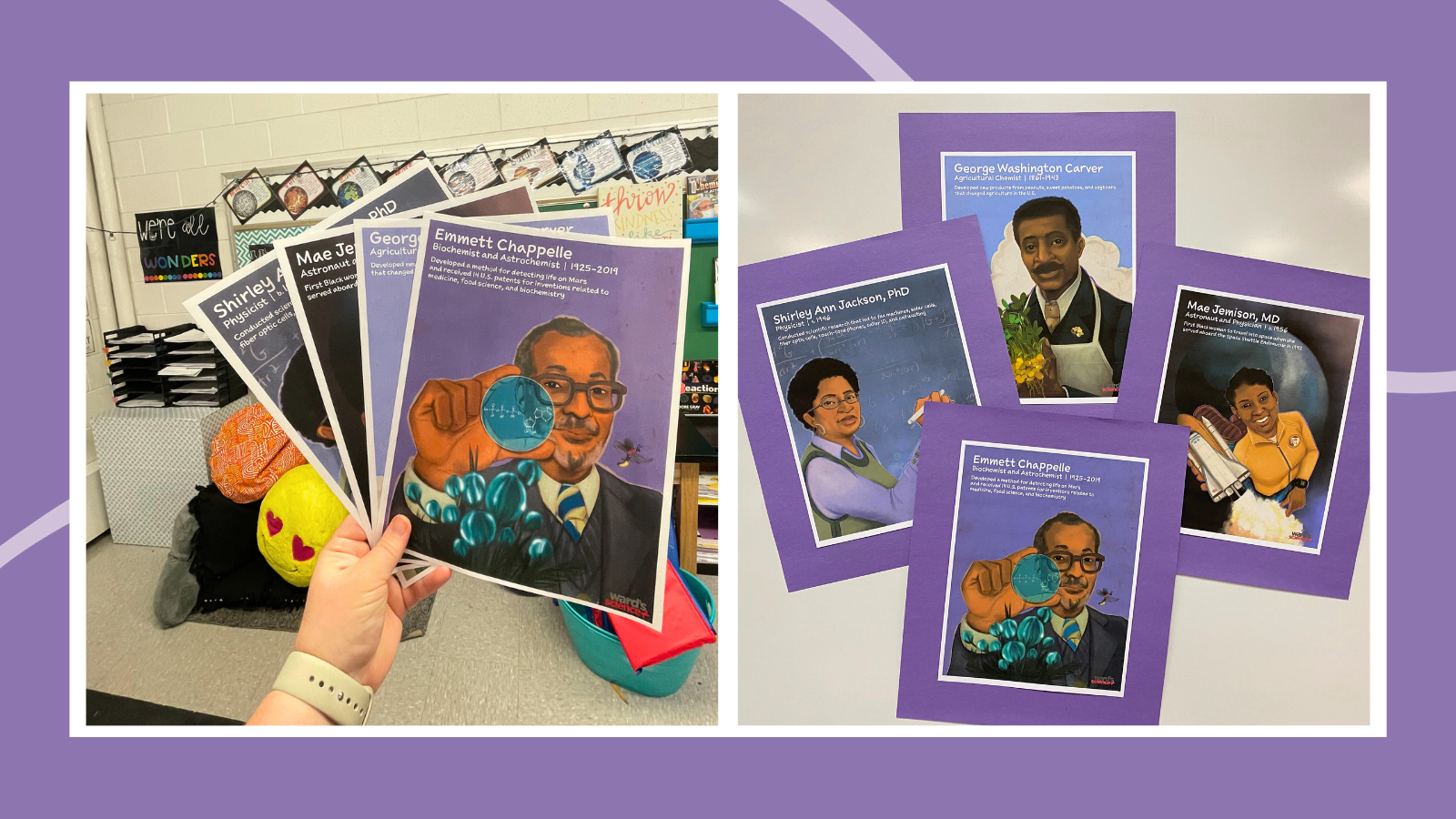
Host a class project where students create presentations on famous African American inventors, scientists, engineers, and tech innovators (e.g., George Washington Carver, Mae Jemison, or Dr. Shirley Jackson). Discuss the challenges and contributions of Black individuals in STEM fields, emphasizing how they’ve overcome barriers and broken new ground. Encourage students to explore STEM careers and the importance of diversity in the field.
30. Create your own animated character
Have students create their own animated characters that reflect their cultural identity. Encourage students to think about the importance of representation in media and how animated films like The Proud Family or Black Panther have helped to normalize and celebrate Black culture in mainstream media.
31. Create a state map
Have students create a map or infographic that shows the unique ways each state observes Black History Month. Encourage students to explore the diversity of Black experiences across the United States and how each region may approach the celebration of African American history differently. Discuss the significance of the month’s designation and its cultural impact.
32. Hold a fashion show
Students can research and present famous African American fashion designers (e.g., Patrick Kelly, Tracy Reese, Dapper Dan) and hold a fashion show showcasing their styles or influence on contemporary fashion.
Research and Present
Encourage students to incorporate multimedia, such as music, video clips, and images, to create more engaging presentations that reflect the richness of Black culture.
Resources for the activities below:
- Black History Month for Kids (Google Slides, Resources, and More)
- Famous Black Americans
- Famous Black Women
- Martin Luther King Jr. Facts
- Rosa Parks Facts
- Jim Crow Laws for Kids (Includes Google Slides)
33. Make a collaborative Google Slides project
Students can work together to create a presentation on a Black historical figure using Google Slides. The presentation can include images, text, and even short video clips.
34. Assign a black history research assignment
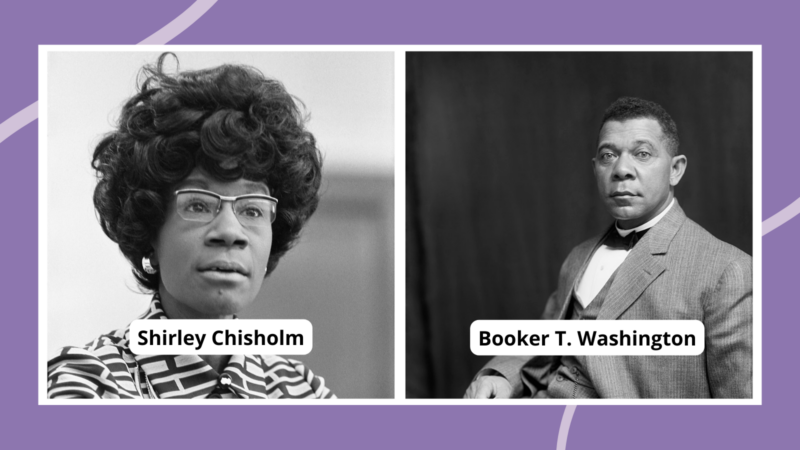
Have students research a famous Black American (e.g., Maya Angelou, Booker T. Washington, or W.E.B. Du Bois) and create a report or multimedia presentation about their life and contributions.
35. Utilize an interactive timeline project
Have students create a timeline highlighting key events in the lives of notable Black leaders and activists.
36. Compare and contrast a trailblazer to a new history maker or difference maker
Have students choose a historical trailblazer (e.g., Harriet Tubman, Martin Luther King Jr.) and a new history maker (e.g., Amanda Gorman, LeBron James). Students can debate who has had a greater impact, using evidence and research. Assign students to write essays or create presentations that compare the contributions of these two individuals to society and history.
37. Research Black Wall Street and Black billionaires or New Black Wall Street in Atlanta
Have students research the rise and destruction of Black Wall Street in Tulsa, Oklahoma, and compare it to modern developments like the New Black Wall Street in Atlanta. Invite a local business leader or entrepreneur who is part of the New Black Wall Street to discuss modern-day economic empowerment in Black communities.
38. Conduct state research
Assign each student a state and have them research the history of how Black History Month is celebrated there, including events, significant figures, and local traditions.
39. Research an invention
Have students research everyday products invented by African Americans (e.g., the traffic light by Garrett Morgan, the hair straightener by Madam C.J. Walker).
40. Research a small business
Research successful African American–owned businesses (e.g., Essence, Uncle Nearest whiskey) and have students create business proposals for their own ventures.
Be sensitive and thoughtful when discussing segregation and racism. Provide students with safe spaces to ask questions and express their thoughts. By using these resources creatively and thoughtfully, we can ensure that our Black History Month lessons are engaging, meaningful, and respectful of the rich legacy of Black Americans.
Free Printable Black History Quote Posters
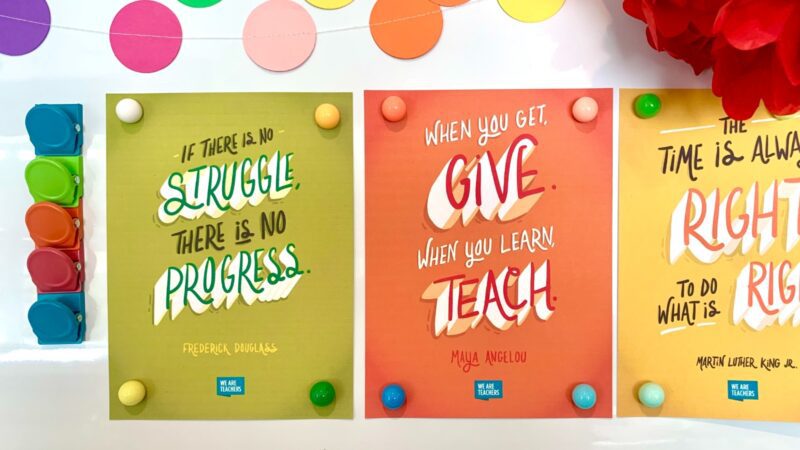
Be sure to get your free bundle of five Black History Month quote posters. They’re perfect to decorate your classroom in February and throughout the year!
Want more articles like this one about Black History Month activities? Subscribe to our newsletters to find out when they’re posted!
